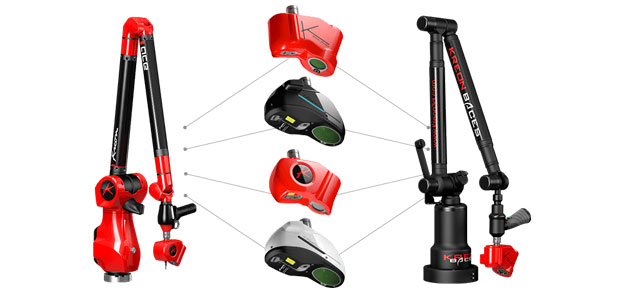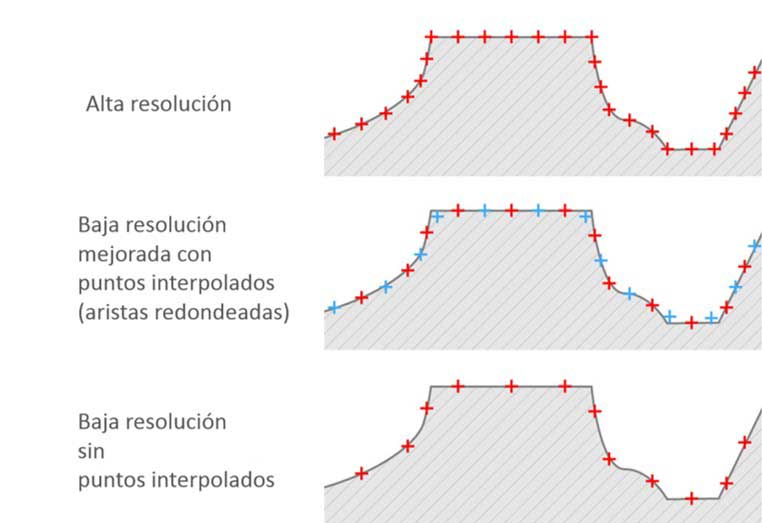3D scanner resolution. Know the keys to choose a 3D scanner

El rendimiento de los escáneres 3D está impulsado por las demandas cada vez mayores de la industria, lo que da como resultado soluciones con especificaciones cada vez más potentes. Entre esas especificaciones, la resolución juega un papel importante en los criterios de selección. Sin embargo, este concepto aparentemente simple cubre nociones que no son tan fáciles de entender.
Definición de Resolución
La resolución es la distancia más pequeña entre dos puntos en una línea láser. La resolución especificada para un escáner siempre se mide en la parte superior del campo de visión: es el mejor valor teórico. Durante el escaneado real, este valor prácticamente nunca se alcanza. La resolución de un escáner depende de la resolución de su cámara, a menos que haya una interpolación de puntos (ver más abajo).
Resolución más precisa para los detalles
La resolución del escáner afecta directamente a la densidad de los datos capturados (nube de puntos) y, por lo tanto, el detalle de la pieza reproducida.
Los metrólogos buscan una alta resolución en los siguientes casos:
- Escaneado de bordes de piezas delgadas
- Escaneado de grabados
- Escaneado de texturas
- Escaneado de superficies rugosas
Comenzando con el lanzamiento del escáner Kreon Zephyr I en 2003, hasta el presente con Skyline Eyes, la resolución se ha cuadruplicado, de 100 µm a 25 µm.

Cómo impacta la forma del campo de visión en la resolución
La forma del campo de visión afecta a la resolución (ver diagramas).
Si el campo de visión es un trapecio con bordes muy inclinados, la resolución disminuye muy rápidamente a medida que el escaneado se acerca al fondo del campo. En términos generales, cuanto más ancha es la línea láser, menor es el grado en que se alcanzará la resolución teórica.
¿Puntos interpolados?
Algunos escáneres en el mercado, con resolución de cámara limitada, compensan esta falta interpolando puntos. La interpolación significa agregar uno o más puntos calculados entre dos puntos que realmente han sido escaneados. Estos nuevos puntos virtuales se derivan de los puntos vecinos en la línea láser.
En comparación con un escaneado sin interpolación, y con una resolución equivalente, los detalles aparecen más borrosos en un escaneado con puntos interpolados. Sin embargo, este proceso mejora los resultados de los escáneres equipados con cámaras de baja resolución.
No confundir: resolución y precisión
Estos dos parámetros no reflejan las mismas características: la precisión describe la precisión de los puntos en el espacio, mientras que la resolución se refiere a la densidad de los puntos a lo largo de una línea. Como estos dos no se correlacionan, un escáner puede tener baja resolución pero alta precisión, y viceversa.
Conoce los diferentes escáner láser que Sariki te propone

Si quieres que te asesoremos rellena el siguiente formulario de contacto y nos pondremos en contacto a la mayor brevedad.
















